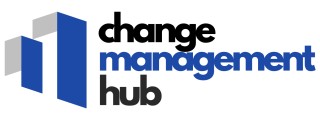
Understanding the Role of an Instructional Design Portfolio
Recognizing the Importance of an Instructional Design Portfolio
In the competitive world of instructional design, having a well-crafted portfolio is essential. It serves as a tangible representation of your skills, creativity, and ability to create effective learning experiences. For instructional designers, a portfolio is not just a collection of past work; it's a strategic tool that can significantly impact your career trajectory.
When hiring managers review your portfolio, they are looking for more than just examples of your work. They want to see how you approach instructional challenges, how you design courses that engage learners, and how you adapt to different learning environments. Your portfolio should reflect your ability to create innovative solutions and demonstrate your expertise in tools like Adobe Captivate and Articulate Storyline.
Moreover, an instructional design portfolio is a dynamic entity. It's not something you create once and forget about. Instead, it should evolve as you gain new experiences and skills. This continuous improvement not only keeps your portfolio relevant but also showcases your commitment to personal and professional growth.
For those new to the field or looking to enhance their portfolio, there are numerous resources available. You can find free examples and inspiration from established designers, which can guide you in creating a portfolio that stands out. Whether you're aiming for a full-time position or freelance opportunities, a strong portfolio will help you get hired and advance in your career.
Key Elements to Include in Your Portfolio
Essential Components for a Standout Portfolio
Creating an instructional design portfolio that captures the attention of hiring managers requires careful consideration of its key elements. A well-structured portfolio not only showcases your skills but also highlights your ability to design effective learning experiences. Here are some crucial components to include:
- Flagship Projects: Highlight your most successful projects. These should demonstrate your ability to solve complex problems and create impactful learning experiences. Use Adobe Captivate or Articulate Storyline to present these projects in an engaging way.
- Variety of Work: Include a diverse range of examples that showcase different aspects of your instructional design skills. This could be eLearning courses, video tutorials, or interactive modules. Providing a variety of work helps potential employers see your adaptability and creativity.
- Clear Learning Objectives: Clearly state the learning objectives for each project. This demonstrates your ability to align instructional design with educational goals, a crucial skill for any instructional designer.
- Visual Appeal: Ensure your portfolio is visually appealing and easy to navigate. A clean, professional design can make a significant difference in how your work is perceived.
- Testimonials and Feedback: If possible, include testimonials or feedback from clients or colleagues. This adds credibility and shows that your work is valued by others.
- Privacy Considerations: Be mindful of privacy policies when sharing work samples. Ensure that any shared content complies with privacy regulations and does not disclose sensitive information.
For more insights on how to effectively structure your portfolio, consider exploring specialized training materials that can enhance your instructional design skills.
Aligning Your Portfolio with Change Management Goals
Align Your Design Portfolio with Organizational Change Initiatives
As an instructional designer, aligning your design portfolio with change management goals can significantly enhance your appeal to hiring managers. Your aim is to demonstrate how your work supports organizational growth and transformation. A well-structured portfolio does more than just showcase examples of your past work; it offers insights into how you craft learning experiences that adapt to and promote change within an organization.
One practical way to align your portfolio is by illustrating how your instructional designs address specific organizational needs. Show examples of how you've integrated feedback to refine and improve learning modules or eLearning courses. Illustrating these iterations conveys that you understand the fluidity required in change management and the importance of adapting instructional materials to meet the evolving needs of the organization.
- Highlight projects where you've utilized popular tools like Adobe Captivate or Articulate Storyline to develop interactive learning experiences.
- Include a video of a flagship project to provide a more engaging and interactive view of your work. This multimedia approach can offer hiring managers a comprehensive look at your skills.
- Consider a section that aligns with a robust change management strategy, demonstrating your understanding of the strategic objectives of such initiatives.
A successful instructional design portfolio seamlessly integrates your problem-solving skills with your ability to foster learning that supports change. By clearly aligning your work with organizational objectives, you not only stand out to potential employers but also position yourself as a pivotal contributor to transformative processes. This approach ensures you can be hired not only based on your instructional prowess but also for your strategic insight into change facilitation.
Showcasing Problem-Solving Skills
Illustrating Problem-Solving Expertise in Your Portfolio
One of the most crucial aspects of an instructional design portfolio is its ability to demonstrate your problem-solving skills in real-world scenarios. A well-designed portfolio not only showcases your work but also reflects your capability to tackle challenges head-on. This section provides insight into striking the right balance between demonstrating your design prowess and illustrating how you can effectively solve learning needs. Consider the following strategies when crafting this part of your portfolio:- Detail Specific Examples: Provide detailed examples of past projects where you played a pivotal role in addressing complex instructional challenges. Explaining the context, including the problem you faced, the solution you conceptualized, and the outcome achieved, offers potential employers a clear view of your design and problem-solving abilities.
- Use of Innovative Tools: Take advantage of tools such as Adobe Captivate and Articulate Storyline to create interactive and engaging learning experiences. These tools can help in effectively presenting case studies within your portfolio.
- Incorporate Multimedia Elements: Include videos or screenshots that capture the essence of the courses or eLearning modules you've developed. Multimedia elements are powerful in demonstrating complex solutions in a tangible form.
- Highlight Course Design Flow: Map out the design process you employed in your projects, illustrating each step from analysis and design to development, implementation, and evaluation. This outlines not only your instructional knowledge but also your strategic problem-solving skills.
- Share Feedback and Results: Whenever possible, integrate feedback or testimonials from learners or hiring managers into your portfolio to highlight the impact and effectiveness of your instructional design solutions. This can also include metrics or analytics that capture success stories, further supporting your role as a designer who can drive performance improvements.
Using Technology to Enhance Your Portfolio
Integrating Technology to Enrich Your Instructional Design Portfolio
In today's digital age, leveraging technology to enhance your instructional design portfolio is not only advantageous but essential. As an instructional designer, using cutting-edge tools can help you showcase your skills in creating impactful learning experiences. Here are some practical ways to incorporate technology into your portfolio:- Use Interactive Platforms: Platforms like Articulate Storyline and Adobe Captivate allow you to create engaging and interactive course examples. These tools can provide potential employers with a dynamic view of your capabilities in designing elearning solutions.
- Multimedia Elements: Incorporating multimedia elements such as videos, audio clips, and animations can bring your work to life. This approach not only demonstrates your technical prowess but also conveys the immersive nature of your learning experiences.
- Web-Based Portfolios: A personal website enables you to create a centralized hub for your work, granting hiring managers and viewers easy access to your portfolio examples. Ensure your website is well-organized, visually appealing, and easy to navigate.
- Shareable Formats: Platforms like Google Drive or LinkedIn enable you to share your work seamlessly. Make sure you consider privacy policies when sharing your instructional design materials.
- Embrace Free Tools: Utilize free resources and software to supplement your design work. These can provide inspiration and expand the variety of examples you can include in your portfolio.
Continuous Improvement and Portfolio Updates
Embrace a Cycle of Improvement
In the fast-evolving landscape of instructional design, continuous improvement is key to keeping your portfolio vibrant and relevant. Just as instruction itself is always evolving, so too should be the way you present your instructional capabilities. Regularly reviewing and updating your portfolio ensures that it reflects your latest skills, projects, and the ever-changing nature of instructional design strategies.
Consider incorporating recent work or learning experiences into your portfolio, whether that's a newly created course using platforms like Adobe Captivate or Articulate Storyline, or an innovative eLearning project that showcases your ability to deliver a transformative learning experience. Hiring managers often look for fresh, up-to-date examples that demonstrate an ability to adapt and incorporate feedback from previous work.
Don't hesitate to share free resources or examples as part of your portfolio. Providing a glimpse into your problem-solving approach can help potential employers view you as a proactive and resourceful instructional designer. Utilizing video enhancements can be a powerful way to highlight your flagship project. Even short clips can convey the depth and thought process behind your instructional designs, bringing them to life in a way that static images simply can't.
Engage with Feedback and Peers
Engagement doesn't stop with showcasing your work. Actively seeking and integrating feedback from peers or mentors can make your portfolio more robust and well-rounded. Joining professional communities or groups where instructional designers share their portfolios can be immensely beneficial. These interactions provide new ideas and insights, enabling you to fine-tune your presentation to better align with current industry standards and expectations.
Continuous portfolio development is not just about presenting polished examples of your work. It's about telling a story of growth, learning, and adaptability. As you move forward, remember to update your website or platform regularly, ensuring that your instructional design portfolio remains a true and dynamic representation of your professional journey. Adopting this mindset of continuous improvement will help you stay competitive and ensure that your portfolio effectively communicates your value as a designer, capable of fostering enriching learning experiences.













